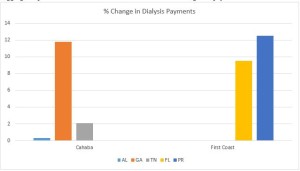UnitedHealthCare Denials for ALS-2 Claims
Talking Medicare
with Brian S. Werfel, AAA Medicare Consultant
Over the past few weeks, we have received emails from ambulance providers across the country reporting that UnitedHealthCare (UHC) has started to deny claims for the ALS-2 base rate. Affected claims include both commercial and Medicare Advantage claims. These providers are reporting that UHC is requiring the use of Current Procedural Terminology (CPT) Codes to support the ALS-2 level of service.
When these providers call UHC to question the denials, the customer service representative refers them to UHC’s online policies and procedures manual. The section of that manual devoted to the ALS-2 base rate largely mirrors Medicare’s definition. For example, it indicates that ALS-2 can be billed based on three separate administrations of one or more medications by IV push/bolus or continuous infusion, or upon provision of one or more of the designated ALS-2 procedures (e.g., an endotracheal intubation).
However, the manual section then goes on to indicate that “Ambulance Providers or Suppliers are required to report CPT or HCPCS codes… when reporting A0433. Ambulance transport services that do not include the services described in criteria 1 or 2 above should be reported with a more appropriate ambulance transport code.”
The manual section concludes with links to two lists of CPT codes. The first list, designated as “ALS2 Criteria 1 Codes” relate to the intravenous administration of various medications. These codes fall within the range of: 96365 – 96376. The second list, designated as “ALS2 Criteria 2 Codes” correspond to the various ALS interventions:
CPT Code: Description:
31500 Endotracheal Intubation, Emergency
31603 Under Incision Procedures on Trachea and Bronchi
31605 Under Incision Procedures on Trachea and Bronchi
36000 Under Intravenous Vascular Introduction & Injection Procedure
36555 Central Venous Catheter Placement, Patient Under Five Years
36556 Central Venous Catheter Placement, Patient Over Five Years
36568 Insertion of Central Venous Access Device
36569 PICC Line Insertion
36680 Intraosseous Line Infusions
92950 Cardiopulmonary Resuscitation
92953 Other Therapeutic Cardiovascular Services
92960 External Electrical Cardioversion, Non-Emergency
92961 External Electrical Cardioversion, Emergency
The ambulance providers have indicated that they have questioned UHC on the necessity of including CPT codes on these claims. These providers argue, correctly, that CMS does not require the use of CPT codes on Medicare claims. Instead, Medicare requires the ambulance provider to document in the billing narrative the justification for billing ALS-2. For example, a provider might list multiple administrations of epinephrine, the use of an intraosseous line, etc.
The fact that UHC is asking for the CPT codes suggests that it does not currently review the billing narratives. Instead, UHC appears to be using the CPT codes to ensure that the ALS-2 criteria are met.
Is UHC correct to insist upon the use of CPT codes? Probably not, at least for its Medicare Advantage claims. However, I think the more appropriate question to ask ourselves is whether it is worth fighting UHC on this issue? If using CPT codes ensure that UHC correctly processes and pays these claims with minimal delay, my opinion is that it is probably easier just to comply with their policy.
Have an issue you would like to see discussed in a future Talking Medicare blog? Please write to me at bwerfel@aol.com.





 Dear Fellow Members,
Dear Fellow Members,












